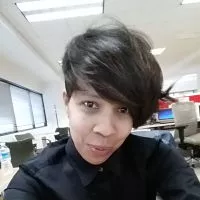You’ve used your design skills to help others bring their creative vision to fruition long enough. It’s time to take a seat in the art director’s chair and execute your own wildly imaginative ideas. Check out what pros say about art director positions, then get those creative juices flowing!
What exactly does an art director do?
Specific duties of art director positions may vary depending on industry, but in general, art directors set the artistic tone of a project, using visuals to bring concepts to life for websites, magazines and newspapers, ad campaigns, television and film, photo shoots and video games.
“Every day is different, [and] that’s what I love most about my job,” says Kaitlyn Angstadt, senior art director at Brownstein Group, an advertising agency in Philadelphia. Angstadt spends some days holed up in a room with other creatives conceptualizing an ad campaign while others are spent creating a brand’s identity or layouts for a print ad. And then there are the days she’s at a photo shoot overseeing its production, ensuring the concept is realized.
It’s all about kick-ass imagery, according to Michael Brittain, who functioned as FX Networks’ art director during his years as the cable channel’s director of print. Brittain was responsible for coming up with movie, TV and video-game posters and turning those ideas into iconic imagery to use in ad campaigns. “It can be very challenging to create a piece of art that is good enough to hang up on the wall, that you’re proud of, that sets the bar higher for art in entertainment advertising,” says Brittain, now the creative director of Ignition Creative, an integrated marketing agency based in Playa Vista, California.
What skills do you need?
Strong conceptual skills are a given. “To create something meaningful, you must start with a strong idea,” says Angstadt. “This is the backbone of commercial art.”
Good communication skills are also essential. Your team has to understand what you want in order to deliver it. Clearly articulate your vision or risk jeopardizing the quality of the project.
A background in and knowledge of art history, photography, graphic design and typography are important too, says Brittain, as is being able to create with your hands. Photoshop has made art more accessible, but “being a hands-on artist transcends just buying an application for your computer.”
Who would be my boss?
Executive creative directors or associate creative directors are the usual head honchos, the latter often being the next rung on an art director’s career ladder.
Are there other titles with similar responsibilities?
Though they may be higher on some company hierarchies, design directors and creative directors are also responsible for conceptualizing projects and guiding their implementation.
What do I need to get ahead in this position?
As an art director, you’re always on, Angstadt says. “There’s never a time when you’re not thinking of new ideas,” so loving what you do is important. Ditto having a thick skin. In this line of work, as with other creative jobs, you have to be able to take criticism, even when you don’t agree with the feedback. If you don’t hit it out of the park the first or second or third go-round, dust yourself off and try again. It’ll make your home run that much sweeter.
How can I get my foot in the door?
Kick off your career with a degree in art or (graphic) design and a portfolio that will impress potential employers.
Breaking into an art director role
Stepping into the role of an art director is no small feat. It requires not just a mastery of design principles and a deep well of creativity but also the ability to lead, inspire, and communicate effectively with a team. Your journey from honing your craft to leading projects as an art director will be filled with challenges, learning opportunities, and, most importantly, moments of creative triumph.
Remember, the essence of becoming a successful art director lies in marrying visionary ideas with practical execution. It’s about pushing the boundaries of what’s possible while remaining grounded in the projects’ and your team’s needs. As you navigate your path, keep your creative fires burning, remain open to feedback, and never stop learning and experimenting. The world of art direction is dynamic and ever-evolving, offering endless opportunities to those willing to take the reins and drive their creative visions to fruition.
So, arm yourself with a strong portfolio, a resilient spirit, and an unquenchable passion for your craft. The art director’s chair awaits those ready to lead with creativity, imagination, and determination. With each project, you’ll bring visions to life and carve out your unique mark in the creative world. The journey may be complex, but the rewards of seeing your ideas influence and inspire are unparalleled. Here’s to your future as an art director—may it be as vibrant and impactful as the work you aspire to create.
Find the art director position you’ve been searching for on Mediabistro’s job board.
FAQs on Advancing to an Art Director Position
1. What are the primary responsibilities of an art director?
Art directors are responsible for setting a project’s artistic vision and direction. This role involves using visuals to bring concepts to life across various platforms such as websites, magazines, advertising campaigns, television, film, photo shoots, and video games. Daily tasks vary greatly, from conceptualizing ad campaigns and creating brand identities to overseeing photo shoots to ensure the vision is accurately realized.
2. What skills are crucial for an art director?
Key skills for an art director include strong conceptual abilities, excellent communication to articulate vision and ideas clearly, and a solid background in art history, photography, graphic design, and typography. Being a hands-on artist and having proficiency in tools like Photoshop are also important, but creativity extends beyond software skills.
3. Who typically oversees art directors in a creative organization?
Art directors usually report to executive creative directors or associate creative directors. These positions are often seen as the next steps in an art director’s career progression, offering opportunities for further advancement within the creative hierarchy.
4. Are there similar roles to art directors in the industry?
Yes, roles such as design directors and creative directors carry similar responsibilities, including conceptualizing projects and guiding their execution. These positions might be ranked differently within company structures but share the core task of leading creative direction.
5. How can I stand out and succeed as an art director?
Passion for your work and the ability to continuously generate new ideas are essential for success. Resilience and the ability to accept and learn from criticism are also crucial, as the creative process often involves multiple iterations before achieving excellence. Staying engaged with your creative pursuits and maintaining a thick skin in the face of feedback are key traits of successful art directors.
6. What educational background and initial steps are recommended for aspiring art directors?
A degree in art or graphic design, coupled with a compelling portfolio that demonstrates your creativity and skill, is the foundation for launching a career as an art director. Your portfolio should showcase diverse work and highlight your ability to conceptualize and execute your creative vision effectively.
7. Where can I find job opportunities as an art director?
Job boards dedicated to creative careers, such as Mediabistro, are excellent resources for finding art director positions. Networking within the industry and maintaining an up-to-date portfolio can also open doors to opportunities.
8. What is the importance of having a “thick skin” in the art director role?
Creative work often involves subjective evaluation, which means art directors must be open to feedback and criticism. Developing a thick skin allows you to learn from critiques without taking them personally, enabling growth and improvement in your creative output. In the face of criticism, resilience is crucial for personal and professional development in creative fields.










